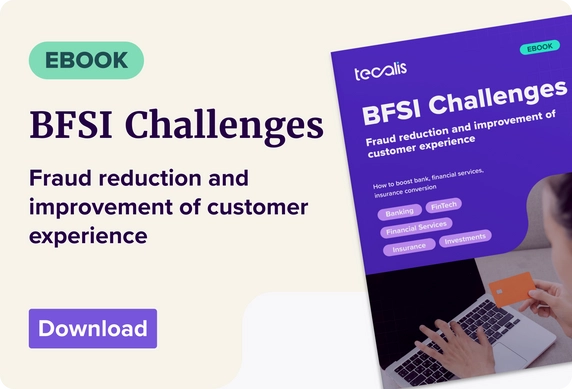Index
Get the latest news right in your inbox
The insurance sector is one of the sectors of activity where we find a greater number of technical questions and in relation to the most common operations between customers and companies. With dozens and even hundreds of complex relevant concepts, many insurers even choose to create their own "insurance dictionaries", where they collect descriptions and definitions of a large number of terms.
The following is a brief overview of the basics of the insurance sector and a block-by-block summary of the most frequently asked questions about insurance and its business.
What is the insurance sector
The insurance sector is the group of companies, organizations, companies, professionals, entities and clients (or users) that act in the market actively, either directly or indirectly. We must not forget that the role of regulators is decisive in the insurance sector, since the rules set by these bodies and institutions are the basis on which insurance activity is built.
This industry brings great benefits, having a positive impact on the investment made in third-party funds and on the attraction of savings through capitalized costs. On the other hand, it allows mortgagors to face larger operations, facilitating possibilities for debtors. These are usually stable products with a medium and long-term outlook.
As a specialist in turning risks into opportunities, the insurance sector has shown itself to be crucial in times of instability such as the recent health crisis. Savings as a risk forecaster has helped industries such as the automobile industry, where the insurance sector has found a new way of understanding this area through CaaS (Car as a Service) in relation to the difficulties experienced due to the lack of microchips.
These are just a few examples of how insurance companies have reinvented their services and customer relationships to create new monetizable assets while responding to new consumer habits. A need for diversification that those who have tackled have been rewarded.
Frequently Asked Questions about the insurance sector
In a previous article, we clearly saw how the insurance industry works and how it is composed. This time, we are going to answer the most relevant frequently asked questions (FAQ) that both users and professionals of the insurance sector ask. The insurance industry may seem complex at first sight, with a great variety of products, terms and conditions, even more so now that thanks to RegTech, insurers can easily enter new markets and vocals. Therefore, understanding the basics is essential to make informed decisions and protect yourself against unforeseen events.
We have compiled a series of frequently asked questions by category, ranging from the basic definition of aspects most frequently asked by customers to specific information on how to improve certain aspects of the day-to-day business of insurers and brokerages. Join us on this journey and discover the answers to the most common questions about the insurance sector.
Ecosystem Parties: insurer, insured, rating and companies

Although it may seem really basic, there is a certain lack of knowledge and confusion about the nomenclatures used to define the different parties involved in the insurance contract.
The differences between the insured and the insurer are clear: the insurer is the company (the one that takes the risk) and the insured is the party that contracts the service and may receive the damage. The insurer's obligations are to provide indemnity while the insured's obligations are focused on responding to payments and fulfilling conditions.
The role of the insurer is the most relevant within the insurance sector. Other concepts that sometimes create confusion are the policyholder and the beneficiary. The former is the one who pays the insurance and the latter the one who receives the indemnity. Insured, policyholder and beneficiary do not necessarily have to be the same person in an insurance contract. On the other hand, there is the profile of the mediator (brokerage), advising on the contracting of the policy. In cases of disputes due to discrepancies in the contract or in the appraisal we also find mediation, although in another aspect.
The work between brokerages, agents and insurers has come a long way in recent years thanks to the emergence of marketing and quoting solutions such as Customer Hub. This system acts as a portal for agents and self-service at the same time, enabling digital spaces for marketers to perform all kinds of operations and activate policies in minutes and for customers to make transactions securely in addition to obtaining products from disruptive verticals through cross-sale.
Differences and connection between the insurance policy and the insurance contract: better with digital signature
The way in which the relationship between the policy and the insurance contract is made is decisive for the insurance contract to take place, and although they are often used interchangeably, there are key differences and connections between the two concepts.
The insurance contract is the legal agreement between the insurer and the insured that establishes rights and obligations of both parties. This agreement formalizes the commercial relationship. The insurance policy is a specific document that is part of the insurance contract. The policy specifically details the conditions and terms agreed upon in the contract and defines the coverages, exclusions, premiums and other relevant aspects. It is a written instrument that serves as evidence of the agreement between the parties.
Electronic signatures play a key role in simplifying and streamlining insurance contract and policy related processes as well as in giving the policy activation full legal and juridical character. By adopting electronic signature solutions, insurers can make it easier for policyholders to subscribe to documents digitally. To establish this relationship, it is necessary to go to the insurance contract law of the market in which it is operating and identify the key specifications for this to take place and be valid, being the electronic signature the best guarantor that helps to comply with it.
The electronic signature, backed by eIDAS regulations and in compliance with SEPA and RGPD mandates, guarantees the authenticity and integrity of contracts and policies, allowing for quick formalization without the need for physical documents and collecting the validation of sensitive information with KYC as well as validating documentation such as appraisals, deeds, expert reports, etc; which are embedded in insurance transactions. This technological approach not only improves operational efficiency by reducing costs, but also provides solid legal support and the best possible experience to both agents and customers who are not very digitized because of its ease.

How the digital valuation of transactions in the insurance industry is carried out: insurance quotes
Several factors affect insurance rates, including age, gender, driving record (in the case of automobile insurance), medical history (for health insurance), geographic location, type and value of the insured property, selected coverages and desired indemnity limits. The determination of the insurance premium is determined by these values, which should be analyzed to obtain a risk score to help us assess the viability of the operation.
To obtain an automated quote, insurance companies, brokers or agents can be contacted directly so that from their Customer Hub they can collect all the information and documentation necessary to assess these aspects in a fast and automated way. In the case of the online channel, users can use insurance comparison websites or work with a broker that have the same systems, uploading the documents there and being validated, processed and securely stored by the RegTech systems of the intelligent assisted selling portal. You will need to provide details such as personal information, vehicle or property details, claims history and other factors that affect premiums. Companies will evaluate this data validated by anti-fraud controls to determine the appropriate rate and coverages.
InsurTech: new nomenclatures derived from innovation in the insurance sector
The convergence of technology and the insurance sector has given rise to the revolution known as InsurTech, marking a paradigm shift in the way insurable risk is conceptualized and managed.
This emerging InsurTech landscape is redefining the insurance landscape, driving efficiency, personalization and security. Continued adoption of these innovations promises to further reshape the industry, offering more agile solutions tailored to the changing needs of policyholders:
- Blockchain technology has burst onto the insurance scene, enabling the creation of smart contracts that are automatically executed when certain predefined conditions are met. This decentralized approach ensures transparency and security in transactions.
- The incorporation of telematics software (telemetry and traceability with electronic notifications) has facilitated the collection of real-time data on policyholder behavior. Usage-based insurance (UBI) adjusts premiums according to individual behavior, encouraging safer behavior.
- AI and NLP have transformed data management and customer service. AI-powered virtual assistants streamline processes, while NLP enables the analysis of large unstructured data sets to assess risks and anticipate market trends (with predictive modeling and big data).
- The use of cloud solutions dedicated to the insurance industry (InsurCloud) has improved operational efficiency. In addition, there has been an intensified focus on cybersecurity based on regulatory standards such as AML6, PSD2/3 (OpenFinance and Open Banking) to protect sensitive data and safeguard the integrity of systems while allowing for easier quoting by obtaining real-time data.
Robotic Process Automation (RPA) has optimized operational efficiency by automating routine tasks. From claims management to policy underwriting, insurance processes have undergone a significant transformation. This has enabled tasks such as automated powers of attorney and digital customer-to-business (B2B) onboarding with KYB techniques.


Insurance companies
Finally, let's take a brief look at the players. We can find different ways in which insurance and its agents are classified. The first distinction to be made is the model: public or private.
Although it may seem that calling the State an insurer is almost metaphorical, the truth is that organizations such as Social Security act as coverage systems. In this sense, we would consider certain taxes and withholdings as the premium and subsidies such as unemployment benefits as the indemnity.
With respect to public insurance entities and organizations, in countries such as Spain we also find the Consorcio de Compensación de Seguros (Insurance Compensation Consortium). With its own assets and outside the State (although dependent on the Ministry of Economy), it acts in a subsidiary capacity as a direct insurer and Guarantee Fund. In regulatory matters, the Directorate General of Insurance is responsible for the regulation, supervision and control of the insurance sector to ensure its proper functioning.

With these basic lines clarified, we can go on to classify insurance according to the types of insurance companies and insurance entities:
- Private insurers: Insurance companies and insurance companies generally incorporated as private corporations that provide insurance services. Banking is one of the most important sectors within insurance.
- Mutual insurance companies: These operate as associations of people who wish to cover individual risks collectively and on a pooled basis. They are usually not-for-profit and can be found with fixed and variable premiums. They are also found as foundations and some also as joint stock companies.
- Cooperatives: Similar to the above but based on the Private Insurance Law and the Cooperatives Law.
- Mutualidades de Previsión Social: They offer voluntary insurance and with limitations according to the Dirección General de Seguros, they operate outside the Social Security coverage.
It should be remembered that there are also different types of insurance intermediaries. Here we find traditional brokerages and those that work online (with different models thanks to InsurTech), independent insurance agents, traditional and online banking operators, as well as many other players that base their activity on insurance marketing. Insurance comparators also come into play in this area.
























